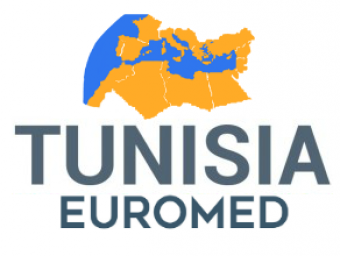Want smart analysis of the most important news in your inbox every weekday, along with other global reads, interesting ideas and opinions to know? Sign up for the Today’s WorldView newsletter.
It was bound to happen. Ever since he announced his run for the White House in 2015, President Trump has taken the country on a nativist spiral. At times, Trump’s more well-heeled allies argued that his repeated demonization of immigrants was just a sop to a hard-line nationalist base. His opponents, meanwhile, had plenty else to complain about: an election campaign cloaked in foreign interference, a tax cut for the ultrarich, an onslaught of trade wars and protectionism, a gambit with Kyiv that led to the president’s impeachment in the House.
But in the midst of a deadly pandemic — and in the last year of his term — Trump is back to what he seems to know best. On Tuesday, it seemed the White House was on the cusp of issuing an executive order that suspends immigration into the United States for at least the next 60 days. Trump had tweeted his intent to do so Monday night, saying the order was required in “light of the attack from the Invisible Enemy” — what he has previously called the coronavirus — “as well as the need to protect the jobs of our GREAT American Citizens.”
The move is an unprecedented extension of Trump’s restrictionist agenda. But it remained unclear who exactly would fall afoul of the new directive, especially when international travel has drastically dropped as a result of coronavirus lockdowns. Reports suggested that green-card recipients abroad may be blocked from traveling to the United States, while there may be exemptions for temporary migrants who are medical workers or guest workers hired to toil in the country’s farmlands or food-supply chain.
The decision plunged would-be legal immigrants, including foreign relatives of U.S. citizens, students and employees of U.S. companies, into a world of stress and uncertainty. They joined millions of others — including citizens of blacklisted Muslim-majority countries and undocumented people brought to the United States as children whose protections Trump stripped — who have been vilified by the president and had their lives potentially upended by a stroke of his pen.
The new order will probably face legal challenges, but the Trump administration has already laid the groundwork for such sweeping, indiscriminate action. “The president has broad authority to restrict entry into the United States — a point the U.S. Supreme Court affirmed in upholding his controversial travel ban in 2018 — and that power is perhaps no greater than during a public health emergency,” my colleagues reported. “State Department officials said they are still waiting for guidance from the White House regarding what types of immigrant visas will be suspended.”
The suspension carries the hallmarks of White House adviser Stephen Miller, the most vociferous anti-immigrant voice in the administration with a long history of association with America’s white-nationalist far right. In recent weeks, Miller has weaponized the public health emergency to revamp a key refugee resettlement office within the administration. Trump, meanwhile, has patted himself on the back for enacting a decree that allowed U.S. authorities to immediately deport would-be asylum seekers on the southern border with Mexico.
But the logic behind this immigration suspension seems lacking. “The United States has more confirmed cases than any other country (with the caveat that China’s data are unreliable), which means that community spread is now clearly and overwhelmingly the biggest obstacle,” noted my colleague Aaron Blake. “And even as Trump announces his most severe immigration restriction to date, he is on the other hand suggesting an easing of coronavirus-spurred restrictions in certain parts of the country, in the name of reopening the economy.”
There is not much solid evidence that restricting immigration helps the average American worker. “To think that shutting down all immigration into the country is the right strategy is quite foolish,” William Kerr, a Harvard Business School professor, told The Washington Post. “It is not one that is economically sound and certainty is not motivated by containing the crisis itself. It’s more of an effort to cast suspicion and blame toward immigrant groups.”
Rights groups lambasted Trump for peddling xenophobia in the middle of a pandemic. “As the United States leads in COVID cases in the world, measures that health experts agree will stop the spread, like access to widespread testing and self-isolation, have been derided and undermined by Trump,” said Joanne Lin, the national advocacy director of Amnesty International USA. “If President Trump wants to limit the spread and the deaths occurring under his leadership, now is the time to look to health experts, and not point fingers at immigrants.”
But Trump has a history of pointing fingers at immigrants. His obsession with fortifying the country against people who have entered the country illegally ought not obscure how his administration seems bent on curbing legal migration to the United States, too. Even the government’s coronavirus relief efforts sought to punish immigrant families, withholding stimulus checks to households where one spouse did not have a Social Security number.
“It’s just fundamentally unfair, and it’s really, really targeted to hurt,” Randall Emery, who leads a nonprofit organization that advocates for U.S. citizens married to immigrants, told the Los Angeles Times.
Earlier this month, the leftist Indian writer Arundhati Roy wrote that the pandemic was “a portal, a gateway between one world and the next.” The global crisis had exposed the tragic vulnerability of a world built on rampant inequity and now presented politicians and activists a unique opportunity to redress these woes, she argued.
But the pandemic seems to be a portal for Trump and his nativist allies, too, and we’re starting to see where they want to take us.
